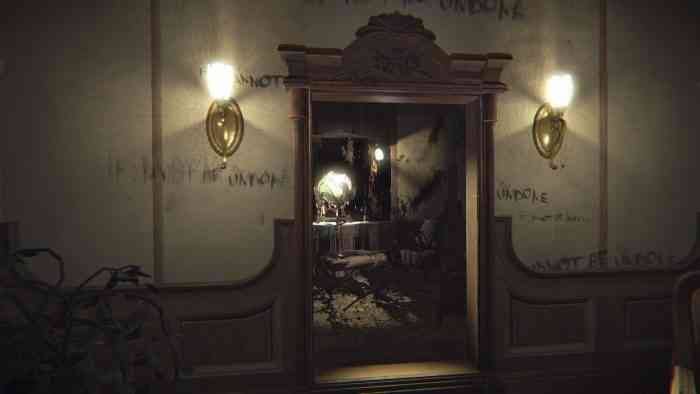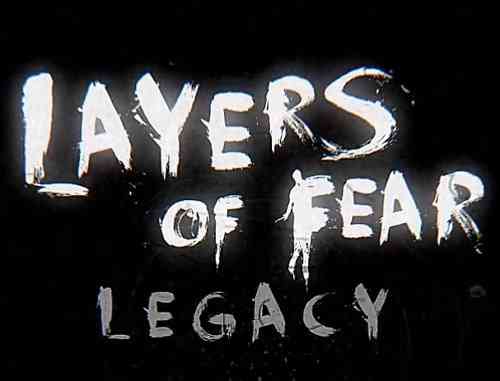Layers of Fear: Legacy Review
In the wake of P.T. – the “playable teaser” demo released by Konami for the eventually canceled Silent Hills – there have been many first-person horror adventures. Certainly, some of them were in the works before P.T. was revealed, but it’s hard to imagine any didn’t feel the pressure building to release something as effectively horrifying. Layers of Fear hews pretty closely to the P.T. formula while adding complexity in the form of the main character’s own mental illness. As such, the game frequently messes with your sense of the physical space. It draws its horror from your inability to foresee what’s around the corner, even if you’ve been around it once before. This version, Layers of Fear: Legacy, collects the original game and its DLC and puts it all on the Switch. I’m always a bit surprised when current-gen games are able to fit onto the Switch, and while the seams show a bit, this is the definitive edition of a solid horror game.
In Layers of Fear, you are an artist with a bit of creator’s block. You’re trying to paint your masterpiece. However, your alcoholism and a series of personal misfortunes have driven you a bit mad. As you wander around your house, searching for ingredients to finish your work, the mansion constantly changes form around you. A door might one moment lead to a bedroom, and the next lead you into a hellish pit filled with paint… or maybe blood? (It’s probably blood.) Walls warp, furniture breaks, lights shatter; your character’s sanity is perfectly mirrored in this environment.
Most of the story is filled in through newspaper clippings and letters found scattered around the mansion. It’s not an overly complex tale, but my first time through I missed a few important pieces, which left me with an incomplete idea of what was going on. This is a missed opportunity. I’m all for supplemental story information being hidden well out of sight, but it’s entirely (and easily) possible to miss some vital info here. The game is already a very guided experience. It wouldn’t have been a loss to present more of the story in a more straightforward manner.
______________________________
“It’s meaty enough to be satisfying, and brief enough not to overstay its welcome.”
Speaking of straightforward, much like with Super Mario Odyssey, Layers of Fear: Legacy is very upfront about how it wants you to play it. As you load the game, you’re encouraged to play with detached Joy-Cons. This allows you to open doors and turn cranks with motion controls. I gave it a go, but even opening a door felt like it required way more movement than it should. Fortunately, you can use the right joystick and ignore the motion controls entirely. Your character walks around the mansion with a limp, due to a prosthetic leg, and this seems to be the culprit behind the game’s sluggish movement. The limp itself I don’t mind – I actually like the personality it injects into the game – but turning and looking are slow. It’s like trying to push through mud every time you turn around. This isn’t a problem specific to the Switch version, however; it was definitely present in the original.
What does seem to be a unique problem to the Switch version is extra loading time. On occasion, when attempting to open a door, you’ll be faced with a loading icon. These never last more than a couple of seconds, but it strips away some of the seamlessness that makes the environments so fascinating. I don’t recall this being a problem on the PlayStation 4 original (though it has been over a year since I took that one for a spin).
I realize I sound very down on Layers of Fear. To be clear, I’ve quite enjoyed it every time I’ve played it. The control issues, and my issues with the story, are comparatively minor compared with the whole of the experience.

That experience can be summed up as disorienting but in the best possible way. The manner in which the world reconstructs itself behind your back is amazing, leading to many “how did they do that” moments. You’ll enter a room, find a painting, and suddenly the lights dim and the painting begins to melt off the wall. There seems to be nothing else to do in the room, so you turn around and exit the way you came in, only to find yourself in a completely different location.
Though light on “puzzles,” so to speak, some Layers of Fear’s most effective moments use the changing of the physical space in creative ways. For instance, in one sequence you’re trapped in a hallway that seems to loop forever. In the distance, you can hear a telephone ringing, but something sounds… off about it. You quickly realize it’s a telephone ring being played backwards. So you turn around and walk the other way, and suddenly the way forward is revealed. A morphing world like this could have become gimmicky, but this is where the game’s relatively brief running time helps. It’s meaty enough to be satisfying, and brief enough not to overstay its welcome.
______________________________
“While the environmental storytelling is solid, the writing and voice acting lack polish.”
I will say that the game does cram too many jump scares into its short duration. Its use of atmosphere and music are terrific at setting the horror mood, but occasionally this is undermined by the developers’ insistence on using haunted house tactics. This is an area where the included DLC, Inheritance, surpasses its predecessor. Here, playing as the grown-up daughter of our mad painter, you revisit the mansion and experience horrific memories and hallucinations. There are a few jumps thrown in for good measure, but far fewer than in the main game. This lets the real star of the show – the horror-drenched environments – take center stage.
While the environmental storytelling is solid, the writing and voice acting lack polish. Lines are read in an over-the-top manner, more appropriate for campier horror. I know there’s no shortage of grimdark stories told in an overly serious manner, but the subject matter on display here deserves a bit of a heavier hand than it received.
Layers of Fear: Legacy has some flaws, but the central experience – exploring an ever-changing mansion as you descend into madness – is solid and exciting. If you don’t mind a few cheap scares, there’s a good horror game here.
***Switch code provided by the publisher***
The Good
- Very effective atmosphere
- Music is spooky and beautiful
- Remarkable use of space
The Bad
- Relies on jump scares
- Story is difficult to follow
- Voice acting/writing lacks polish


